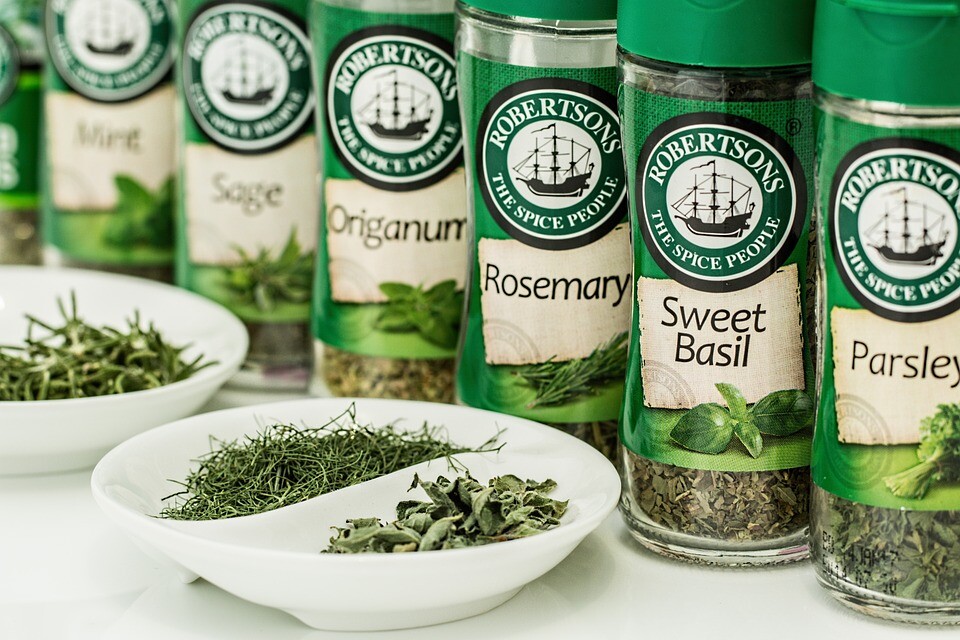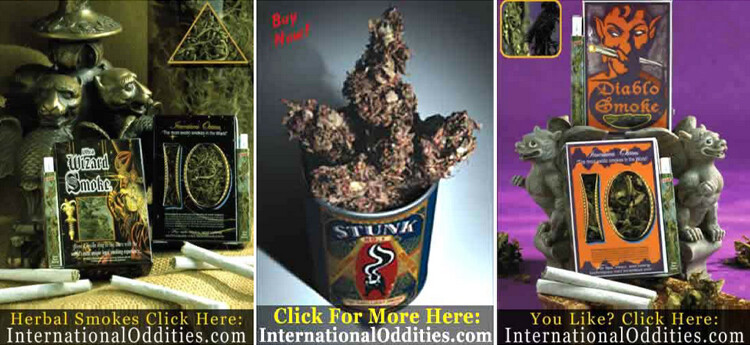From Wizard Smoke To Killer Spice: The Rise And Fall Of Fake Marijuana

Whenever there's something good, there are people who want to make a copy of that thing, but cheaper and worse, to make more of the money. Marijuana is no exception. Come with me now on a journey through the wild, wacky, and woeful world of make-believe Mary Jane ...
FAKE POT PHASE ONE: MISLEADING HERBAL BLENDS
If you were a reader of High Times magazine during a 20 year period starting in the late '80s, you would have seen page after page of ads for what looked like primo mail-order weed. They'd have enticing names like Rasta Blend, Thai-Stix, Afghanish, BC Hydro, and Ultra Wizard Smoke. They'd look like the dankest of dank nugs, perfect examples of high-end cannabis cultivation, some carefully sealed in glass tubes for your eventual enjoyment.
These companies were spending mad cash on advertising and promotions, so they must have been shipping a lot of this fake weed stuff across the country. Of course, this was in the days before dispensaries being common in many states, but if it wasn't really weed, what was it?
You'd read the label, and it would sound like a bunch of stoner stuff. But that was a trick! They would use technically accurate but highly misleading terms to confuse naive consumers. Every included herb was listed by whatever slang name it might have that sounded most cannabis-like. Thus the herb dogbane would be listed with its slang name "Indian hemp," while the herb Lion's Ear was listed as "Wild Dagga" (dagga is the Afrikaaner word for cannabis).
You might have heard of Salvia Divinorum, a herb that can produce hallucinations when smoked in a concentrate. Well, this stuff would have "Salvia O." on the label, so it's probably got to be something similar, right? Actually, no, Salvia O refers to common sage.

So when you read the label of the "Mean Green Irie Jamaican Formula" and it included ingredients such as Marybud, Jamaican Tangawizi, and the "TH3 complex," you might think that sounds pretty stoned indeed! But then you look it up, and you find out it's really just marigold and ginger, while the TH3 is made from lettuce, mullein, and wormwood.
Look, if you inhale any smoldering thing, you're probably going to catch some kind of buzz. And some of these herbs have traditionally been used as smoking blends with mild psychoactive effects. But it's not cannabis, it won't affect you like cannabis, and these products were a rip-off.
This was a massive, multi-million dollar industry selling blends of ordinary herbs with exoticized names at a huge mark-up. You'd get this amazing-looking bud in the mail, maybe even sealed in a glass tube, but when you opened it up, you'd find that it was some plant matter that's definitely not cannabis, or maybe just compressed herbs on a wooden skewer with a fake stalk stuck on the bottom. Some of the buds would look sparkly and dank, but under a microscope, you would see they were lacking in the resinous trichomes that appear on cannabis, and the sparkliness was coming from some kind of sprayed-on sheen.
One legit use for these products is in movies. When actors are inhaling tobacco or weed onscreen, they're usually actually smoking clove cigarettes. But when you need your characters interacting with marijuana buds, they give these companies a call. Films using the fake pot include Seth Rogen joints Knocked Up and Pineapple Express and TV shows such as CSI and True Blood.

Columbia Pictures
However, I gotta figure that a lot of this fake weed was bought in bulk and re-sold to unsuspecting youths who didn't know what real cannabis looked like. I wonder how many people took this as their first toke, had an unpleasant time, and wondered what the big fuss was about since this marijuana stuff clearly didn't do anything for them?
While there are still some of these products out there, their heyday is clearly over. The website for what was once the biggest fake pot purveyor seems to be dead, and they haven't updated their YouTube page since 2013. I can't see there being much demand for the Ultra Wizard Smoke these days.

While this iteration of fake pot might have been a scam, at least it didn't really hurt anybody, unlike the stuff which followed ...
FAKE POT PHASE TWO: KILLER SYNTHETICS
The active ingredients in cannabis are called cannabinoids. These include the chemicals we know and love, like THC and CBD. But it turns out science can help us make new cannabinoids, some of which are way more powerful than the ones nature provided. These synthetic cannabinoids can produce intense psychoactive effects and sometimes have significant health risks as well.
Some synthetic cannabinoids can also cause withdrawal symptoms in ways regular cannabis does not. As a result, they can lead more easily to compulsive and addictive use.
The advent of these synthetic cannabinoids led to a new kind of fake pot in the early 2000s, with brand names like Spice and K2. This stuff skirts the laws against weed since they are novel chemicals not covered by the cannabis ban. They spray some strange synthetic cannabinoids onto a base of herbs and then sell them in corner stores and gas stations.

This is, of course, is what typically happens when we ban a drug in its basic herbal form. It tends to go from being a relatively harmless or even beneficial natural substance to becoming a more powerful concentrate, often eventually replaced by a synthetic substitute. We're seeing this play out today as opium prohibition led to it being replaced by heroin, which is now being replaced by fentanyl. We also see this effect in coca drinks being replaced by pure cocaine, then crack, which has now largely been replaced by meth.
These fake pot products can be very harmful. Not only because of the unknown synthetic cannabinoids but because of other strange and deadly ingredients they sometimes contain.
One batch had potent blood thinners in the mix, causing an outbreak of people bleeding from their eyes and ears, which is pretty goddamn horrifying. You're chilling with your friends, do some bong-hits of that weed-like stuff you bought at the gas station, and suddenly you're bleeding from all your orifices. These products are now available everywhere, causing harm and deaths in ways cannabis never could.
Of course, governments have responded to a problem ultimately caused by the ban on pot with a push for even more prohibition. Instead of logically legalizing real marijuana as the safer option, Spice and K2 have been banned in many states with extreme sentences. The result? Even stronger versions of these drugs have come on the market, which can just be sprayed onto a piece of paper, and are even more likely to cause mental health problems, overdoses and deaths.

So can we please just legalize real cannabis properly, fully and completely, everywhere, once and for all? We're trying to protect kids from marijuana, which is actually a pretty safe herb when used in moderation, and the result is we're exposing everyone to rip-offs and major health risks.
Whatever you think of weed, I hope we can all agree that it's better if people smoke the real stuff and not the synthetic pseudo-pot that can make them bleed out of their face holes.
Dana Larsen only smokes real weed. Follow his toketastic tweets at twitter.com/danalarsen and read his even more toketastic tales at PotheadBooks.com
Top Image: DEA





